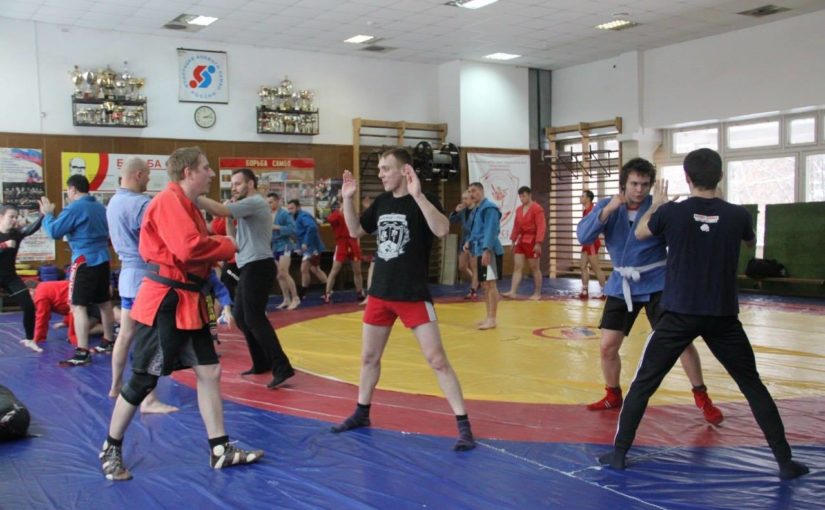“Let us never negotiate out of fear but let us never fear to negotiate.” – John F. Kennedy
When we think of conflict communication oftentimes the focus is on managing violence. Sometimes, however, it’s not physical harm you are trying to avoid but rather that your career is on the line. A common instance of this is in negotiations. For a sales teams it’s a competition, who can land the best deal, them or the other guys. The company that wins not only obtains desired revenue but the salesmen and women get to keep their jobs, feed their families, and have a little piece of mind. Maybe they’ll even make a bonus. On the buy-side it’s a matter of meeting targets, say savings, speed to market, or quality objectives. The job might not be as immediately on the line as it is for the sales team, but the negotiator’s career oftentimes is. A track record of solid performance is table-stakes for promotions, raises, and job security.
Negotiations in the business world can easily be as high stakes as physical confrontations on the streets. Your livelihood is on the line. Your reputation. Your job… Consequently it’s important to not only take such things seriously but also to get them “right.” There are a ton of tricks and tactics that can help assure the outcome you need, such as playbooks, communication plans, escalation paths, and the like, but there simply isn’t enough space to cover such things here. I’ll keep things higher level, addressing some strategies for four common types of negotiations that everybody should know about: negotiating a contract, a job offer, a raise, and resolution to a conflict at work.
Contracts:
Negotiating a contract is not only something that many folks do for a living, it’s also something that everyone should understand at least a little. After all, someday you will very likely want a new car, house, or other major purchase where a bad deal will not only lead to buyer’s remorse but also heartache and unexpected expenses or hassles. A lot of folks think that contract negotiations are all about compromise, finding the right balance of give and take, but that’s usually a recipe for a losing outcome. With proper planning, however, it doesn’t have to be.
Start with whether or not the other guy(s) is someone you can work with. Even at the corporate-level decisions are made by individuals, so the account team matters. Lack of character, integrity, or cultural compatibility are but three of many reasons why deals fail to provide expected value in the long run. A bad fit at a low price is a recipe for disaster that will cost you time, money, and very likely your job down the road. Once you believe you’re dealing with the right folks, you need to identify the “non-negotiables” on both sides. For example, if you’re the buyer you likely cannot go over your budget whereas the seller wants to be price-competitive but still needs make a profit. You are likely not willing to let the supplier violate the law or your ethical standards to get the desired outcome under contract, so certain behaviors are off the table too. This is why, for example, Nike has child labor rules baked into their deals and Starbucks has inviolate ethical sourcing rules. Only suppliers who are willing to comply make it into their infrastructure.
If both sides can clearly articulate what’s off the table up front you will know immediately whether it’s even worth pursuing a negotiation, saving a lot of time and money. And, you’re less likely to get bogged down or derailed by details when you can go back to the original, well-thought-out list of deal-killers, discover whatever challenge isn’t on that list, and then look for a path to resolution that’s acceptable to both parties. You can be far more accommodating and creative when you realize that the disagreement is over money or risk-sharing, for example, than if the dispute is over something one side or the other is unwilling to budge on. Cover the Terms (which adjusts risk amongst the parties), statement of work (what the parties will do), the service levels (how successful outcomes are measured), and then price in that order. In this fashion it’s far easier to negotiate an outcome you can not only live with but will find is low maintenance throughout the life of the resulting contract.
Job Offers:
Virtually everyone negotiates a job offer multiple times throughout their career. And, most people are really bad at it. Never forget that the initial offer is the point at which you have the highest leverage. And, it’s the time where you can set yourself up to succeed or fail. Begin by understanding what the company or agency’s reasons are for wanting to hire you in the first place. What’s their unmet business need that you are intended to fulfill and, most importantly, what’s your success worth to them? While value is vital, salary matters too. Companies and agencies often post salary ranges online so it’s not all that tough to know where their initial offer fits within the range and how much higher they are likely to be willing to go. If you cannot find that information, search for similar companies to find comparable positions.
Just like the contract example, your next step is to determine where your boundaries lie. Is there anything that’s non-negotiable in terms of salary, benefits, working conditions, travel, success measurements, career path, or the like? It probably goes without saying, but if you are just wanting to get your foot in the door for a first job you should have lower expectations than if you are a seasoned executive, though I mention it as many Millennials have inflated expectations of their worth. It’s a business deal, a cost/benefit equation, so keep emotion out of it. Your prospective employer certainly will.
Be willing to walk away, you’ll have a lot more leverage that way, but also be reasonable in what you ask for, especially if you’re negotiating with your future boss rather than with an HR department. These initial steps will set his or her impression of you, a notion that will last for a long time to come. It’s very challenging to overcome a negative first impression. Conversely, how they negotiate from the other side of the table will provide great insight into what it truly will be like to work there. Interviews work both ways—you convince them that they want you on the team while they convince you that you will be able to succeed there.
I once turned down a job offer that would have been a significant promotion and commensurate raise over a parking spot. It wasn’t that the parking spot itself was a deal-killer, though it would have been a great convenience that shortened my commute and made downtown traffic more palatable, but rather the way in which they handled my request. Their intransigence made it clear that a culture of bureaucracy and blind adherence to policy would have made implementing innovative solutions virtually impossible. Knowing that I couldn’t be successful after taking the job in such an environment I turned them down and moved on to other opportunities.
Raises:
Once you’ve been working for a while, typically a year or more, a raise may be in order. Negotiating a raise is very different for union-represented employees (whose progression is set by contract) than for everyone else, but either way reminding employers of the value you bring is important. Most companies and agencies use routine performance appraisals where your boss goes over what you have done, what goals you have struggled with, met, or exceeded, and discusses how well you are doing. Continuously plan for that so that you’ll be ready when the moment arises. Invisible accomplishments don’t count, so without undue bragging or bravado, keep your boss appraised of the things you do that go over and above throughout the year. And, document them as you go along to bring with you for the performance review.
Shortly after a good review is a great time to make overtures about a raise if your boss hasn’t already opened the conversation without your prompting. The discussion should be about facts and data, not feelings. Nobody cares if you believe that you deserve higher pay, bonus, or benefits, they only care about your contribution to the team. Talk about what you have done to make your boss and/or your team look good—important company goals you have exceeded, revenue you’ve raised, costs you’ve cut, or other accomplishments that set you apart from the rest of the pack. If you operate on a team, gracefully acknowledge the group’s successes then explain your individual role in getting things done.
Additionally, be armed with information to help you succeed in the negotiation. For example, you should know the salary range for your job or skill code, both inside and outside your company. Oftentimes internal pay scales fail to keep up with the marketplace. Don’t worry about what other folks in your workgroup make, focus on how you add value and how you believe that translates into what you are worth.
Be polite and persuasive, but don’t take things personally if you cannot achieve the desired outcome. The boss may face constraints or politics you know nothing about. If you can discover what those are so much the better, but rather than getting upset about how the conversation goes consider the alternatives instead. Is it time to update your resume or redouble your performance? If you do end up leaving never burn your bridges. It’s often a smaller world than you might think. Telling a current employer to piss-off and die, no matter how badly you want to, will likely hurt you on your next job. Folks have a way of finding out.
Conflict:
The challenge with conflict negotiations is that more often than not you’re emotionally involved, which is why many companies and agencies employ professionally-trained facilitators to help navigate the process and resolve disputes. Successfully negotiating resolution to conflict depends on the underlying causes. If it is a clash of personalities that requires a different approach than an intentional ethical violation, for example. Consequently the first thing you’ll need to do if you are the independent party brought in to resolve things is to interview stakeholders and try to ascertain what truly happened. If you find yourself in a situation where you may be the cause or the aggrieved party and have to take care of things yourself you will still want to do as much fact finding as feasible before working toward resolution.
Keep in mind that perception is reality so just because something isn’t true doesn’t mean that it doesn’t matter to the other party. But, misperceptions can be cleared up. For example, I used to start work at 6:00 AM on the West Coast when I’d have several meetings with folks on the East Coast. Two or three hours later, whenever my schedule opened up, I would go out, say good morning to my team, making sure I was visible for a while so that folks could tell me if they had something urgent on their minds or ask for help. They called that “management by walking around” in business school. I saw it as being there for the team (as opposed to hiding in my office which was around the corner from where they sat). One of my employees, however, saw it differently. She thought I was checking to see if everyone was at their desk working, a thought which never even crossed my mind. If I didn’t trust the team I never would have hired (or retained) them. That misperception wasn’t particularly hard to correct, but it did cause morale issues for a short while until I realized what was going on.
Armed with whatever background information you are able uncover, you can formulate a strategy for dealing with the disagreement in a way that will keep it from reoccurring. When you speak to the parties, especially when you have a vested interest in the outcome, it is vital to keep your cool and focus on behaviors rather than making things personal. Folks who feel threatened or insulted stop listening, often becoming defensive or aggressive and poised for (verbal or physical) battle. In fact, when someone is losing an argument they virtually always take things personal. At that point the disagreement is no longer about the action or error, often turning to animus that is not easily resolved.
You can feign anger on the job, but it’s a tactic that should rarely (as in no more than once every couple years) be used and then only for special purposes. If folks think you’re bound to blow up at them it will undermine their trust and your career. If you’re actually angry, walk away and re-approach the subject when you’re in a better mood. Saying something along the lines of “I’m having an emotional reaction to this” can both help you calm down as well as have a good reason for tabling the conversation. The only time that feigned anger is appropriate is when you’re dealing with an ethical breach or similarly serious event. It takes years build up an emotional bank account with those around you, yet in seconds you can withdraw all the credit you have gained if you act out inappropriately.
Conflict negotiation can be tough, but it’s also a time to pull out your bag of “dirty tricks,” so to speak. There are a variety of tactics that are often used by conmen and criminals for nefarious purposes that, when turned to a more positive intent, are appropriate in a professional setting. This includes things like forced teaming, coopting, and loansharking. Forced teaming is tactical use of the word “we.” Instead of “I have a problem,” say “We have a problem.” It shows that you’re in it together, both vested in the problem as well as the outcome. It feels inclusive too. Coopting is designed to get other people on your side before they’ve determined what they really think about you. If you can turn critics into advocates, which takes a bit of social and communication skills, you strengthen your position, gather allies, and get help in resolving the issue. If helps if you focus on the superordinate goal of helping the business so that it doesn’t come across as self-aggrandizing. Loansharking is typically done by offering small favors designed to evoke feelings of indebtedness in others. Yeah, it’s cheesy, but even simple stuff like getting coffee for the other person every so often, can make a difference in their feelings toward you. Those may appear to be shallow tactics, but they are highly effective psychologically, especially when you are well-intentioned.
Some final thoughts:
No matter what you’re negotiating begin by keeping the endgame in mind. Know your goal, know your boundaries (non-negotiables), and stay on track. The better you know the other party, what’s urgent and imperative to them, what they need, and how they are compensated or measured, the better. Know yourself and your objectives so that you can stay on track too. Creativity is good. There’s more than one appropriate way to solve most anything, but guard against an agreement that unduly alters what you were originally aiming at. It’s easy to get caught up in the moment, especially if the other party is a very experienced negotiator and more than a little manipulative. If in doubt, sleep on it before agreeing to any final resolution.
Make sure you’re talking with someone empowered to make a decision before you get started. There’s no point in wasting your time otherwise, so if you discover you’re dealing with the wrong people escalate. Or play them off against each other, though that’s tough if you’re not a professional and not a game that most folks ought to play save in special circumstances.
Negotiation is more about communication than anything else, so you will need to exercise active listening skills throughout the process. Silence can be your friend, as the other party will often feel compelled to fill it, oftentimes giving away more than intended. Ask before you assert, aim for clarity and cooperation, pay attention to non-verbals to see if it’s working, and don’t hesitate to course-correct as needed (so long as you don’t stray from your goals, of course) The best deals are those in which both parties find a win. Be courteous, patient, and respectful, but always stay within the parameters you decided before you got started.
About the author:
Lawrence Kane is a senior leader at a Fortune 50 corporation where he is responsible for IT infrastructure strategy and sourcing management. He saved the company well over $2.1B by hiring, training, and developing a high-performance team that creates sourcing strategies, improves processes, negotiates contracts, and benchmarks internal and external supplier performance. A bestselling author of more than a dozen books, he has also worked as a business technology instructor, martial arts teacher, and security supervisor.




